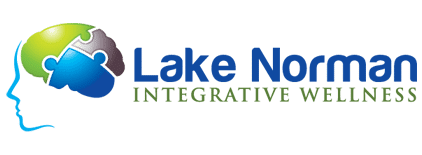Introducing Neurofeedback Therapy
Neurofeedback therapy and it’s a non-drug way to re-train unhealthy brainwave patterns. Neurofeedback therapy often eliminates or improves symptoms of:
- ADHD
- Anxiety
- Depression
- Fibromyalgia
- Memory Loss
- OCD
- Addiction
- Autism
- Chronic Fatigue
- Insomina, Sleep Disorders
- Migraines
- Post Traumatic Stress Disorder (PTSD)
- And more!
What is Neurofeedback?
Neurofeedback is a type of biofeedback that uses electroencephalography (EEG) to provide a signal that can be used by a person to receive feedback about brain activity. The EEG signal is fed into computer software first then the feedback, usually a movie or music, is returned to the person being trained. This feedback loop can produce changes in brainwave activity. The process used to adjust brainwave activity is known as operant conditioning, which is a method where rewards for positive behavior increase learning capabilities. Think of Pavlov’s salivating dog and you can get the idea of how your brain works to improve activity. The concept is fairly simple. The computer monitors your brainwaves while you watch a movie or listen to music. When deviations from normal brainwave activity occur, the computer triggers an audio or visual cue that alerts the patient that they are outside normal ranges. These cues are received by the brain, which subconsciously adjusts itself back to a normal pattern to make the cue stop. With enough repetition of this process, the brain eventually learns to stay in the normal ranges on its own without the computer. With the brain functioning normally on its own, symptoms of irregular brain activity will stop. It has been well documented that people who suffer neurological problems have abnormal brain waves in certain areas of the brain. For instance, case studies using QEEG “brain maps” have shown that people with Attention-Deficit-Disorder (ADD) have elevated delta brainwaves, while those who suffer from depression have elevated alpha brainwaves. Those with anxiety will have elevated Beta brainwaves, while those suffering from memory loss usually have decreased theta brainwaves. Training the brain using neurofeedback can change these brainwaves over time, adjusting them into normal, healthy ranges. It can improve alertness, attention, emotional regulation, behavior, cognitive function, and mental flexibility. When the brain moves back into normal ranges, users will often see a reduction in symptoms. The best part of neurofeedback is that results are often permanent, allowing a person to reduce or even eliminate medications altogether. Where medications only manage the symptoms, the goal of neurofeedback is to address the underlying cause and restore normal brainwave functions.How Does Neurofeedback Work? 
Neurofeedback utilizes a non-invasive technique for monitoring brain activity. Small sensors are attached to specific areas of the head using paste. Our Neurointegration software records the brain waves and displays the data in real time. During this time the patient is watching a movie or listening to music. The software compares the incoming brainwaves to that of an optimal brainwave in the target range. If the brainwaves deviate from normal ranges, it triggers the audio or video to fade. The brain automatically detects this and refocuses itself back into the proper range. Training sessions usually last 30 minutes and this process is repeated hundreds of times per session.
The Brain Is A Learning Machine
Through operant conditioning, the brain is rewarded when the audio or video returns to normal. Eventually the brain learns to stay in the healthy ranges without the reward stimulus, and is able to sustain normal activity independent of the computer. This is achieved by reconnecting functional pathways in the brain.
Neurofeedback does not target any particular disorder. Its purpose is to change timing and activation patterns in the brain. This improves brain regulation, which can impact a variety of symptoms. Different symptoms will require triggering different areas of the brain. The software is designed to target specific areas of the brain according to a patient’s symptoms.
How Many Sessions Are Needed?
There is no magic number. Just as every person is unique, the number of sessions will vary according to each person. Noticeable results typically occur between the first and tenth session. In general 20 – 40 sessions are needed for the results to become permanent. Symptoms in some patients will resolve in a shorter time. Some require more training, some less. The goal is to complete enough sessions to ensure consistent and lasting benefits. A brain map can be generated at any time between sessions, so that you can visually see the progress your brain is making.
Get Started With Neurofeedback Therapy
Talk to our staff about scheduling an appointment to begin Neurofeedback therapy. The therapy consists of 3 parts:- Running a Brain Map. The first step in the therapy is to record an image of the brain (getting a “brain map”). This noninvasive process involves recording your brainwaves for 6 minutes with your eyes open and six minutes with your eyes closed.
- Analyzing The Results. Next, your EEG recording is uploaded to a normative database which compares your brain to an individual your same age and gender that is within normal ranges. Your neuromap report identifies your emotional and cognitive issues by showing the areas of the brain that are operating outside of the normal range. A suggested protocol is generated and is designed to stabilize the area of the brain which is the farthest away from the norm.
- Neurofeedback Sessions. Your neuromap sessions are relaxing and enjoyable, as you watch a DVD of your choice for 30 minutes. Sensors read your brainwaves while photic glasses guide your brain into an optimal pattern. Audio and visual cues reward the brain, encouraging these patterns to become permanent. Patients often train 2-3 times a week for approximately 6 weeks, thus completing their 20 session program.


